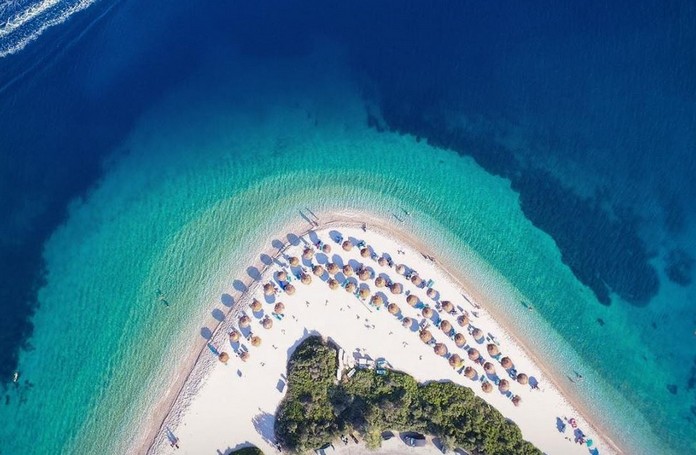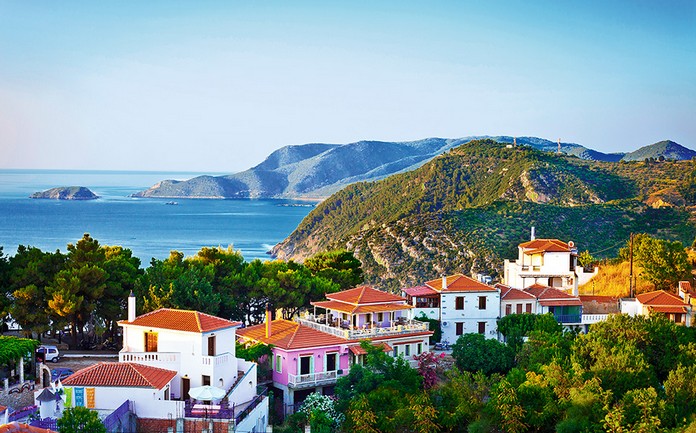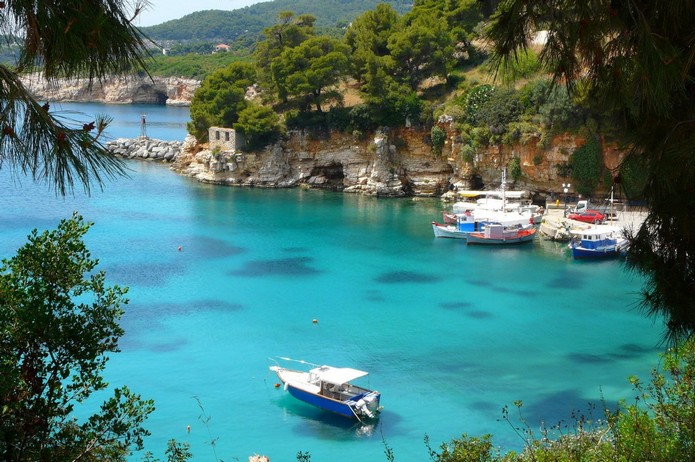Alonissos lies to the east of Skopelos island from which its southern part is separated by a narrow channel. To the east of Alonissos are the small islands of Lekhousa, Peristera and Adelphi. The island has a long narrow shape with an area of 64 sq km of coastline. It has luxuriant vegetation with pine trees almost touching the sea in some places and there are also some fine sand beaches with clear sea.
Alonissos has been inhabited since prehistoric times. The Mycenaeans settled on the island in the 14th c BC and two cities famous for their wine exports to the region, evolved during the Classical period.

There are some remains of ancient settlements at Kokkinokastro on the south-east coast of the island. Alonissos was conquered by the Athenians (4th c BC) and later by the Romans to be recaptured by the Athenians in 428 c.
It was raided and plundered by Barbarossa (1538) and became subject to the Turks from whom it was liberated along with the other islands.In 1965 the island was struck by a very strong earthquake which created much damage to the capital. The inhabitants moved south-east to Patitiri which is now officially the capital and harbour of the island.
TOUR OF THE ISLAND
Patitiri, a tiny, modern settlement built in a very sheltered bay, is a bustling lively place with many restaurants along the sea-front and ample tourist accommodation. There is a bus service to Palia Alonissos and caiques link it with the neighbouring uninhabited islands and the superb beaches on the island itself.

It is also possible to take an excursion around the island by caique. Alonissos does not have a good road network and the best way to get to know the intricately indented coasts is by caique. Excursions around the island are organized by local tourist agencies with more frequent departures in the summer.
The settlement of Votsi, 1km north of the harbour is hidden amidst lush greenery. Further to the north are the beaches of Platsouka, Milia, Khrysi Milia and Kokkino Kastro. Archaeological excavations on an island opposite Kokkino Kastro have revealed tools and petrified bones dating to the Middle Palaeolithic period, which are considered to be the earliest traces of human life in the entire Aegean. At Kokkino Kastro can be seen several remains of an ancient acropolis and a Venetian fort.
Further to the north are the sites of Steni Vala, Glypha, Kalamakia and Agios Dimitrios. The tourist settlement of Marpounda, 3km south of Patitiri, has fine sea and lush vegetation.Palaia Alonissos, or Chora, is to the west of Patitiri on a hill with a magnificent view over all parts of the island.
It is a small enchanting town with densely built traditional houses that seem almost to be forgotten by time. Many of the destroyed houses have been restored. Sights worth seeing include the remains of the Venetian fortification and the churches of Agios Athanasios and Agios Georgios.The monastery of Ayii Anargyri lies to the north and to the north-west are the very popular beaches of Vrysitsa, Tsoukalia and Megali Ammos.

A center for the care and protection of the Mediterranean seal Monacus monacus has been built at Yerakas at the north end of the island. The sea of Alonissos has also been proclaimed a marine park of the Northern Sporades in which this rare animal is a protected species.
HOW TO GET THERE
There are very frequent ferry services from Volos to Patitiri on Alonnisos. Distance 60 nautical miles.There are also regular ferry services from Agios Konstantinos to Patitiri. Distance 62 nautical miles.
There are regular hydrofoil services from Volos and Agios Konstantinos.Alonissos is connected by ferry with Glossa on Skopelos, Skiathos, Trikeri island, Kymi and Thessaloniki and by hydrofoil with Glossa on Skopelos, Skiathos and Trikeri.
In the summer there are additional hydrofoil services to Skyros, Evia, Platania, Trikeri island, Thessaloniki, Marmara, Moudania, Pefkohori and Porto Kara.